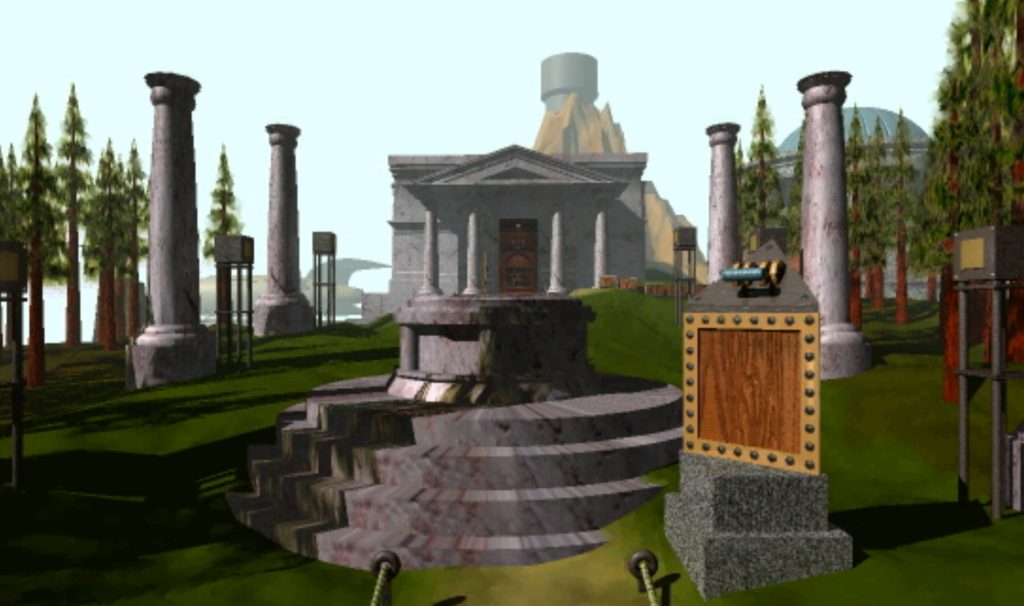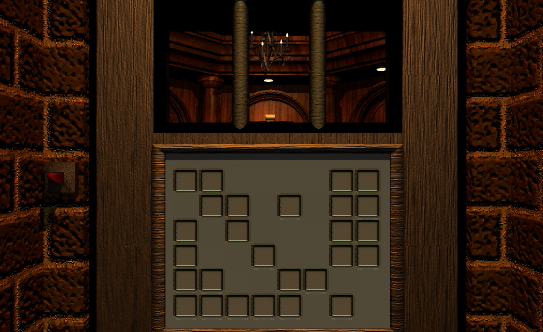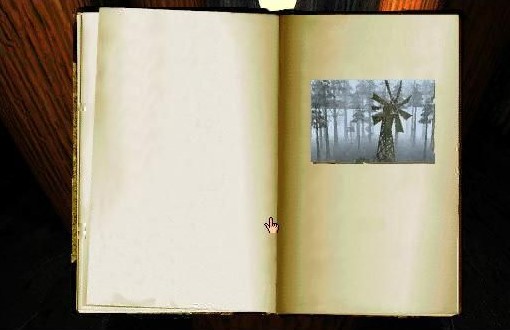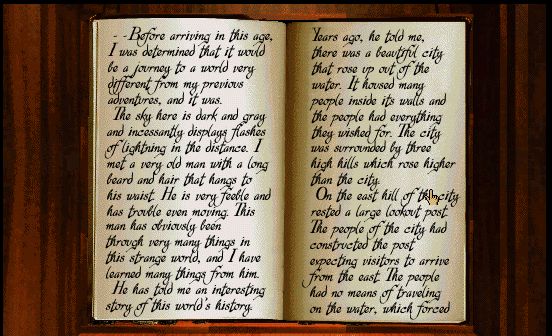I’ve been hearing about Myst for a while. It has been mentioned in both of the game-centered classes that I’ve taken in college, though both times only as an aside or a simple name-drop in the context of the topics of space, interactivity, and storytelling. My own father, who does not play any games at all, has even mentioned Myst in passing when we discussed games’ artistic potential.
Curious about this mysterious, all-encompassing art game, I quickly discovered that it was made all the way back in 1993, and ranked as the best-selling PC game until 2002’s The Sims. This pervasiveness intrigued me. “What the hell is this game?” I wondered.
So, with my expectations high, I decided to give it a try.

First, an introduction. Myst is a point-and-click adventure puzzle game initially released for the Macintosh PC, though I played the (slightly graphically-and-musically-enhanced) Masterpiece Edition from 2000, downloaded from Steam. In the game, you play as a nameless and silent protagonist that has arrived on the small island of Myst, which you move through and interact with through clicking. Myst has several mysterious structures and machines, and by exploring the island and solving its puzzles, you learn about its previous inhabitants and how it came to be abandoned.
Pretty simple concept, right? Well, for my spoiled Gen-Z self Myst proved to be a hard-to-understand and almost impossible-to-play experience, largely due to its thematically appropriate lack of information.

Myst is a game that gives you nothing beyond what it includes through its own objects and space. All of the meager explanations of objectives, gameplay, and narrative are diegetic; you have to sift through the game’s mixed media, from written books to videos. While it is tempting to connect Myst to the “walking simulator” genre, the game focuses more on puzzles than exploration for its own sake. While its narrative is told through space in the vein of Gone Home, Myst’s more hands-off approach to storytelling seems to indicate that being an interactive piece of fiction is not its main purpose.
Rather, Myst is interested in dropping the player into a world and seeing how they deal with it. Much like Atlus — the writer of the island’s journals and the sole explainer of the story — the player is a traveller that finds themselves going through a portal to a new place, and it’s up to their logic to understand it. This idea manifests in the pure difficulty of solving puzzles in this game, to the point where I question how anyone could have beaten it without looking at a guide.
However, while the game’s lack of information can make it frustrating and hard-to-play, its critical examination of games as magic circles and portals makes it quite fascinating, especially for its time period.

As an early 3D computer game, Myst seems to act as a portal to a realistic and logical space, not a cartoonish or abstract one. While movement is limited to clicks, you interact with the island in a way a human would, at least until the magic begins. Through its magic “linking books” (books with a video window that allow the reader to jump to that world) and other pseudo-scientific portal devices, the game emphasizes the power of media as a way of containing worlds. In function, the books are a lot like games, and the book-users are the gamers. Like the characters within the game, we have chosen to cross into another world through our PC, and what we do in the other world is the primary ethical question of Myst.
In effect, the game encourages a consideration of the possibilities of magic circles, portals, and boundaries, particularly in relation to media. Can magic circles be used as prisons? When one becomes well-verse enough in traversing boundaries, how do they affect the worlds they visit? How could portals and their power corrupt people? As a game, Myst is a linking book to the eponymous island, which asks many questions about the nature of games as portals.

While Myst may feel quite dated and hard to play, it is that difficulty which is attractive about the game’s promise to be a portal to another world, one which takes logic and reason to understand and ultimately “fix.” Rather than leading the player through its fiction, the game asks you to consider why you chose to engage with it at all, and what makes a game special.


The choice for Myst’s protagonist to be silent and nameless seems to be another element of the game that reflexively points towards its awareness of its being a Magic Circle that was created to be explored. A nameless character creates less of a boundary between the player and the game, as well as leaves space for projection.